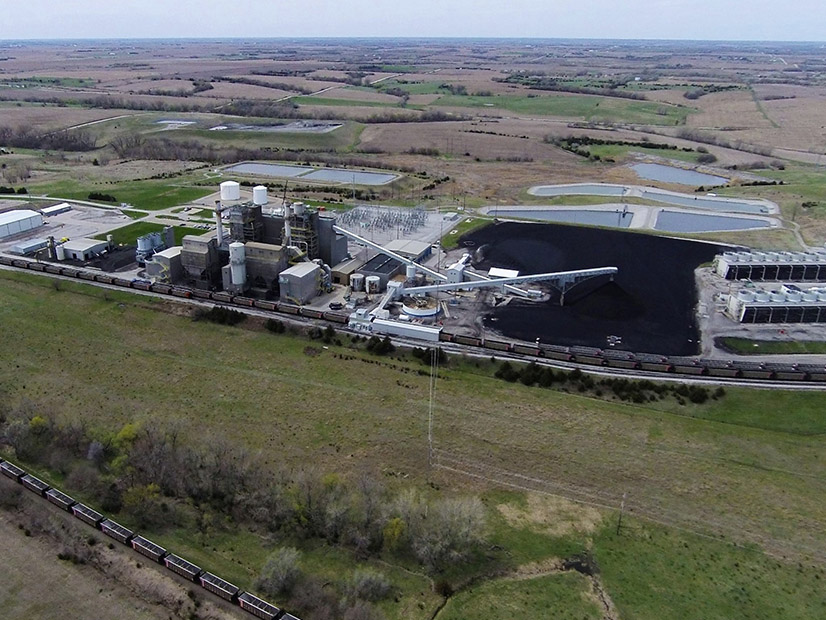Load-serving entities and southern regulators are decrying MISO’s efforts to create its first long-term regional resource assessment report for release at year’s end.
The grid operator plans to perform a regional resource adequacy assessment to identify areas in its footprint that will be short on supply. Some member utility representatives and MISO South state public service commission staff argue that the assessment will be misused in state regulatory dockets to denigrate utilities’ resource plans.
The assessment will differ from the RTO’s and the Organization of MISO States’ annual resource adequacy survey, which relies on LSE responses. It will also be distinct from the grid operator’s evaluations conducted before its annual capacity auction. While those estimates only look five years and one year in advance, respectively, the new assessment will examine the footprint’s resource retirements and additions five to 20 years in advance.
MISO says the new assessment will be purely informational and refreshed annually for its members. The RTO will tap Applied Energy Group, which will scour utilities’ retirement announcements, renewable additions and sustainability goals for more information.
“The world around us is changing a whole lot. As the fleet evolves, ongoing comprehensive analysis is needed to detail risks and inform MISO and stakeholders,” staff engineer Aditya Jayam Prabhakar said during a special workshop Monday.
Jayam Prabhakar said this year’s assessment will focus on the new resources on the horizon and when they’ll be built. He said MISO will examine how an evolving resource mix could increase resource-adequacy risks and how the system’s needs might change. Jayam Prabhakar said the assessment wouldn’t be used to justify the grid operator’s transmission planning.
But Mississippi Public Service Commission consultant Bill Booth said that identifying system needs through the report is at odds with a purely informational aim. He noted that MISO cannot dictate that resources be built.
“So, what is it going to do? Make recommendations?” Booth asked of the assessment.
Jayam Prabhakar said the report will merely inform members and regulators about what the RTO sees coming.
WEC Energy Group’s Chris Plante said he worried that the study would be cited in arguments before state commissions against utilities’ integrated resource plans.
“You may inadvertently box in load-serving entities,” he said. “People are going to use this report to their advantage, to the extent that they see an advantage.”
Fresh Energy’s Allen Gleckner said Plante’s argument didn’t make sense. “To argue against transparency of information so it serves your interests at the commissions is baffling. If you have a good plan in front of your commission, this study should support your planning,” he said.
Plante said LSEs must juggle confidential purchase agreements and fluid and confidential planning beyond a five-year horizon. He also said WEC has found that MISO’s vision of the future resource mix clashes with its own.
“You cannot hold the whole system hostage by saying, ‘Well your plan doesn’t agree with my plan, but I’m not going to tell you how,” argued the Union of Concerned Scientists’ Sam Gomberg. He said it’s impossible for an intervenor to misuse a well-researched and informational report in state commissions’ dockets.
Gleckner said he found LSEs’ five-year plans as being confidential “odd.”
“Frankly, that’s the kind of behavior by LSEs that makes planning so hard,” he said.
Jayam Prabhakar said MISO will simply extrapolate its members’ plans and update them annually. “There’s [nothing] extra being added in this assessment,” he said.
Consumers Energy’s Kevin Van Oirschot said it’s a “fallacy” that the study would be purely informational.
“I would say just stop pretending that somebody is not going to use this for something,” he told MISO staff.
He also said he worried the study would be based on “inaccurate or incomplete” information and would put utilities in a position of continually defending themselves against the report.
America’s Power Michelle Bloodworth said it’s important for MISO to give its members a view of the resource mix beyond a five-year timeline.
The Organization of MISO States Executive Director Marcus Hawkins agreed and said OMS and MISO were able to iron out snags within the early days of their joint resource adequacy survey. He said it has since become a useful snapshot of the RTO’s near-term supply.
Mississippi PSC staffer David Carr asked that MISO clarify the appropriate use of the study ahead of time.
MISO currently estimates it will have about 30% renewable penetration by 2028. By 2040, it expects the Midwest region to achieve 54% renewable energy generation and a 40% carbon reduction from 2021 levels. MISO South is expected to have 36% renewable energy generation and a 55% carbon reduction by 2040.
MISO engineer Hilary Brown said the grid operator was able to secure about a third of its projected resource expansion through members’ integrated resource plans. She said not all MISO utilities are under obligations to produce IRPs and their absence doesn’t mean members aren’t actively planning their future resource fleets.
The year-end assessment will coincide with MISO’s Markets of the Future report, which will outline changes necessary to manage a vastly different future generation fleet. (See MISO Begins Pondering Future Market Changes.)



